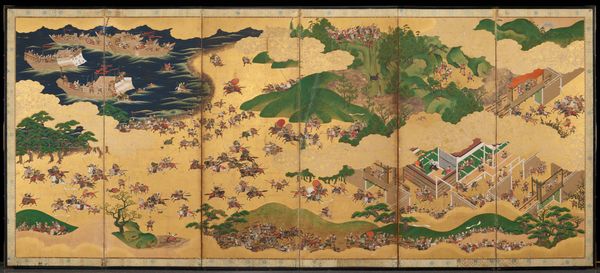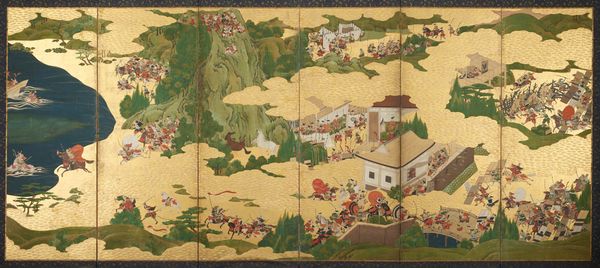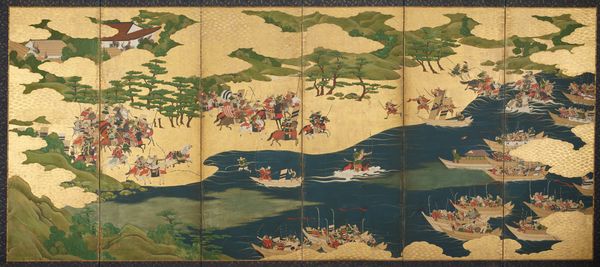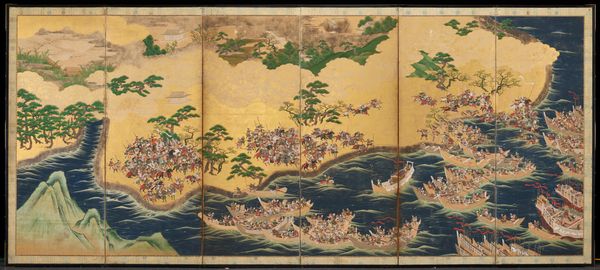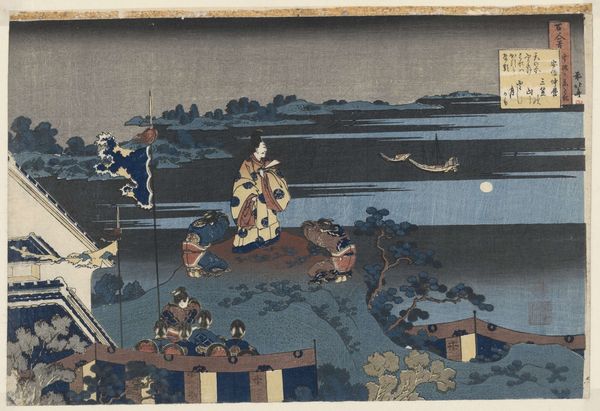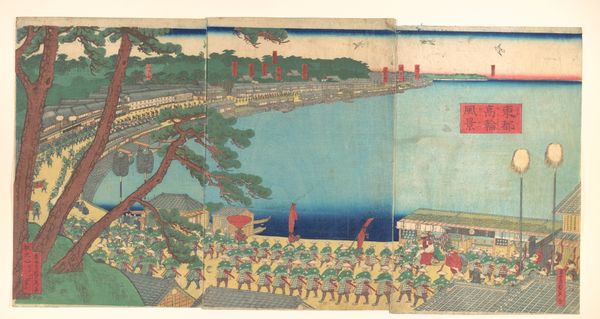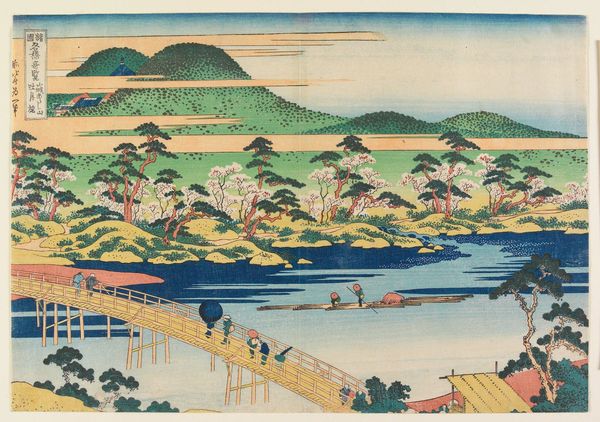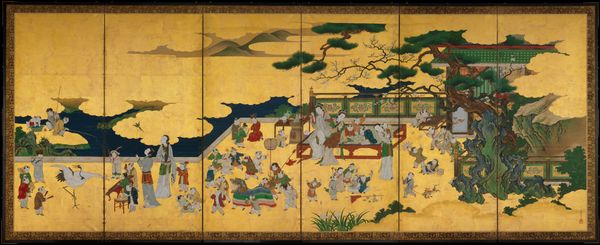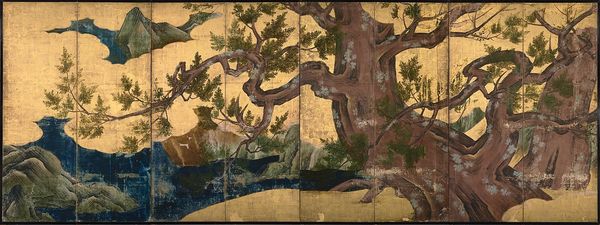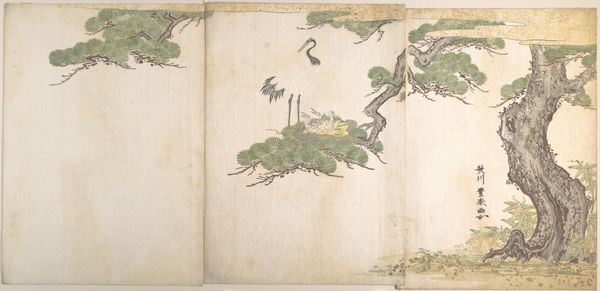
“An Imperial Excursion” (Miyuki), “A Boat Cast Adrift” (Ukifune), and “The Barrier Gate” (Sekiya) 1550 - 1633
0:00
0:00
tempera, painting, ink
#
narrative-art
#
ink painting
#
tempera
#
painting
#
asian-art
#
landscape
#
ink
#
horse
#
men
#
wall painting
#
history-painting
#
yamato-e
Dimensions: Image (each screen): 65 1/2 in. × 11 ft. 8 in. (166.4 × 355.6 cm)
Copyright: Public Domain
Tosa Mitsuyoshi created these three six-panel screens with ink, color, and gold leaf on paper sometime in the late sixteenth century. These gilded folding screens don’t depict a real landscape, but rather scenes from “The Tale of Genji,” a classic work of Japanese literature. The screens offer us a glimpse into the aristocratic culture of Japan at the time, particularly in the selection of these scenes from the Tale of Genji which focuses on courtly life and romance. Note how gold leaf is used extensively to create a luxurious backdrop, emphasizing the wealth and refinement of the depicted world. We see processions of figures, noblemen on horseback, and elegant boats, all rendered in meticulous detail. The screens likely functioned as decorative objects within the homes of powerful families. As an art historian, I would want to look into the patronage networks of the Tosa school to understand the social and institutional contexts of the work. I’d research the tastes of the elite families of Japan at the time, what stories they liked, and what they valued. This helps us understand art as something that is deeply embedded in the culture that created it.
Comments
No comments
Be the first to comment and join the conversation on the ultimate creative platform.


